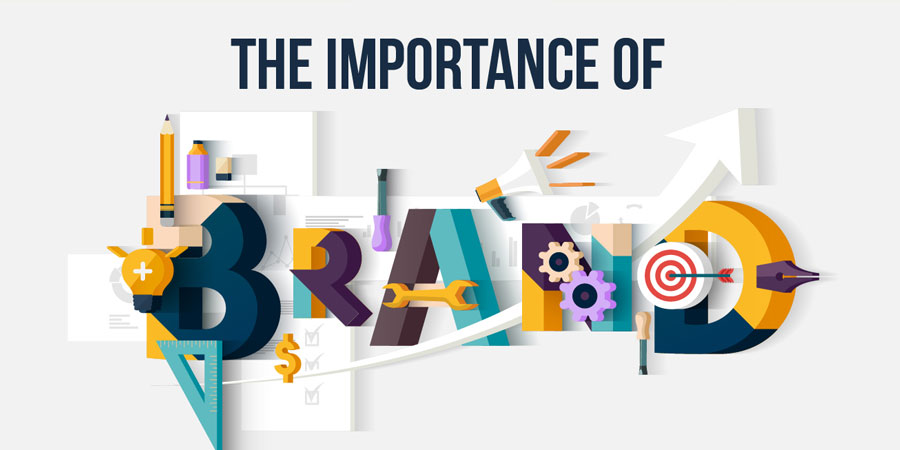Your brand might not be what you think it is, but it’s more important than ever.
Brand isn’t logo. Brand isn’t what’s in your mission statement. And brand is definitely not what your CMO insists it is.
Your brand is simply a promise. It’s a shortcut that everyone you engage with uses to figure out what to expect. We have no other way to navigate the world. There are too many options and not enough time. Which means that we can’t possibly know what you know or do the research you’ve done. We certainly can’t become chemists and performance analysts. All we can do is make our best choice in the moment, and that choice is based on the promise.
Nike has a brand. If Nike opened a hotel, you’d know pretty much what to expect from it. Right now, you’re probably picturing the lobby, or imagining what’s on the wall of the room.
Marriott, on the other hand, simply has a logo. If Marriott came out with a line of running shoes, you’d have no clue what to expect (except that they’d probably be boring, and priced just below the highest-end brands).
We can learn a lot about brand from wine, because the experience there is so easily tested. The Journal of Wine Economics has written about this for decades. In one widely quoted study they discovered that in a blind tasting, wine lovers prefer cheaper wine over expensive wine. Obviously, if the same were true in sighted tastings, no one would ever buy expensive wine. Seeing the wine (which is another way of saying, “understanding the brand”) changes the way the wine tastes.
Worth repeating that: Among people with trained palates and a lot of focused attention, awareness of a brand of wine changes the way the wine tastes.
This, of course, is true for just about everything we buy.
The high-end and the low are probably made in the same factory. Axe has a marketing team that sits right down the row from the folks who market Dove. And Amazon creates an environment for the shopper where everything is just a click away, eliminating geography and convenience from many conversations.
What’s a marketer to do?
The answer isn’t a fancier ad or a better label or a logo from Michael Beirut.
Instead, the path lies in understanding what it even means to make and keep a brand promise.
Who’s it for and what’s it for?
What will happen to my status if my friends see me with this product?
Will it make me feel stupid to pay extra for this?
Does the purchase and use of this product help me fit in or stand out?
How does the price of this product fit in with my story about money?
In rural India, Water Health International has a brand that is the envy of any marketer. They sell fresh water in villages that previously had none. Their product replaces a one-hour walk to a stream for dirty water, water that might make your family sick. Is there any stronger promise a brand can make? This will save you time and save your life, too.
It’s worth considering a few things about WHI, though:
- When they arrive in a village, few people adopt the new water right away. It takes months or years. That’s partly because people are skeptical, and also because their story about money, status and tradition doesn’t leave room for making a choice about paying for water.
- WHI won’t sell you water in your own container. Instead, you must buy one of their containers, which is distinctly colored. The ostensible reason is that refilling a contaminated container could very well lead to illness, destroying their promise. The better reason is that as people see more and more of the jerry cans in the village, trust goes up, status goes up and demand goes up as well.
- Which leads to the biggest takeway: Even when you think you might be at the base of Maslow’s hierarchy (what could be more basic than clean water?) action almost always involves higher needs, like belonging and community standing.
Because of fifty years of TV, marketers got lazy. We thought our job was pretty pictures and fancy ads. Not true. Our job is change. Our job is to make a promise about how our intervention in the customer’s world will offer them a path toward better.
We know you have a choice. There are a ton of ways to get the thing. We sell the thing too. The difference is that our brand, our promise, gives you more than the thing. It gives you the emotional shift you were hoping for all along.
SETH GODIN is the author of THIS IS MARKETING, a worldwide bestseller, along with one of the most popular blogs in the world. His 100 day seminar on marketing has had more than 9,000 graduates.
–
This article first appeared in www.brandchannel.com
Seeking to build and grow your brand using the force of consumer insight, strategic foresight, creative disruption and technology prowess? Talk to us at +9714 3867728 or mail: info@groupisd.com or visit www.groupisd.com


